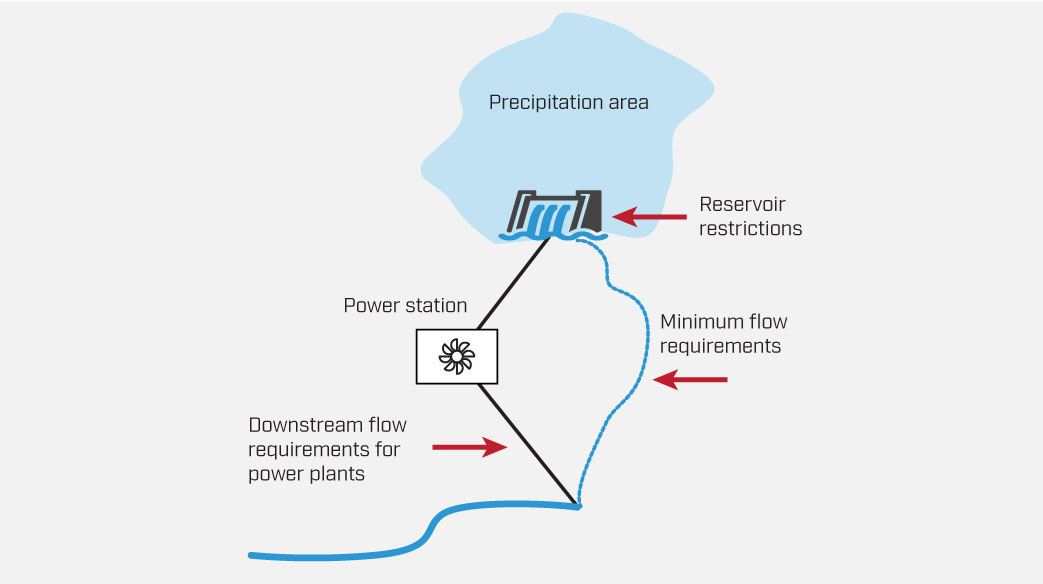Hydropower is the backbone of Norway's power system. It is renewable and well-established, accounting for the majority of Norwegian power production.
Hydropower with reservoirs provides flexibility in both the short and long term. It contributes, among other things, to accommodating increasing shares of variable wind and solar power in the electricity supply.
Publications:
- Power system impacts of new environmental constraints for hydropower in Norway
- Sammendragsrapport – Samlet innvirkning på det norske kraftsystemet av nye miljørestriksjoner for vannkraften
Most hydropower plants operate under concessions that impose conditions on their operation. These conditions can be revised to improve environmental conditions without unduly affecting power production. The EU Water Framework Directive outlines the framework for preserving water environments, and Norway has incorporated this into the EEA Agreement through the Water Regulation. The goal of the Water Regulation is to protect and, if necessary, improve the condition of coastal waters and watercourses. Revisions of concession conditions will be the primary means of implementing the Water Regulation in regulated watercourses. As a result of these revisions, there may be requirements for increased minimum flow and less flexibility in reservoir regulation.

The SumEffekt project provided insights into how the power system is affected by the cumulative impact of new environmental requirements. Research in the project used advanced data models to analyze scenarios for the power system in 2030, comparing results with and without new environmental requirements. The findings help regulatory authorities understand the total consequences of new requirements, and hydropower producers plan how to use and upgrade their facilities.
The research content was related to highly complex analyses with multi-market modeling combined with detailed modeling of the hydropower system and its restrictions. To achieve this, SINTEF Energy used the research models FANSI and PRIMOD. Another result of the project is therefore more well-tested and robust models suitable for analyzing future power systems with a high share of non-regulatable power production.
Some of the key results and findings from the project include:
- A reduction in hydropower production by 3 terawatt-hours (TWh) per year and an increase in power prices by 1-2% for Norway on average due to new environmental requirements.
- Increased flooding in certain reservoirs due to new environmental requirements in simulated autumn periods with heavy rainfall.
- Relatively significant increases in power prices due to new environmental requirements in simulated spring periods when there is low water in the reservoirs.
- A significant decrease in the number of power plants that can contribute reserve capacity when reservoir restrictions are in effect (weeks 18-34), especially at the beginning of the period.
Owner and Project Responsible: Renewables Norway
Main Executor and R&D Responsible: SINTEF Energi, represented by Ingeborg Graabak.
Deltagere:
- Statkraft
- NTE Energi
- Å Energi
- TrønderEnergi
- Hafslund E-CO
- Eidsiva Vannkraft
- Hydro Energi
- SFE Produksjon
- Sira Kvina Kraftselskap
- Eviny
- Skagerak Kraft
- Energiforsk
- Energiforetagen
- Fornybar Norge
- Statnett
- NVE
The project is an Innovation Project for the Industrial Sector (IPN-project) partly financed by the Research Council of Norway - program EnergiX.

